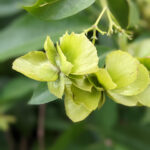Scented Leaf Geraniums
Botanical Family : Geraniaceae
Native to : Southern Africa
Researched by : Ann Wilson


Botanical Family:
The Family Geraniaceae is composed of five different genera whose members have five petals, five sepals and five or ten stamens. There are other various reproductive features that help define the family. The genera are Monsonia, Sarcocaulon, Erodium, Geranium and Pelargonium, the latter three are the best known. These three are named from the Greek words for heron, crane and stork, respectively, comparing the seed pods of the plants to the bills of these birds.
The genus Pelargonium is recognized by the presence of a nectar tube (the hypanthium), irregular flowers, fewer than ten fertile stamens and a style split into five stigmas (the plant part that receives the pollen). As a side note, in Texas we also do have three true Geraniums that survive our summer heat, Geranium carolinianum, Geranium dissectum and Geranium texanum, all of which many consider as weedy and insignificant, as well as two Erodiums, Erodium cicutarium and Erodium texanum.
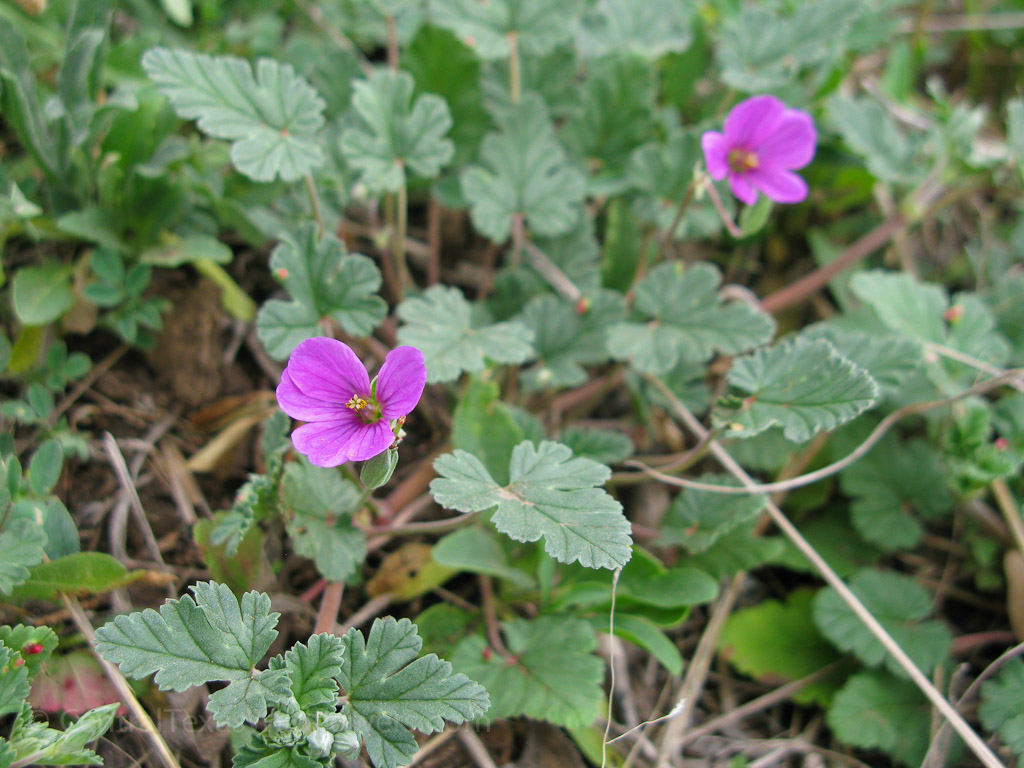
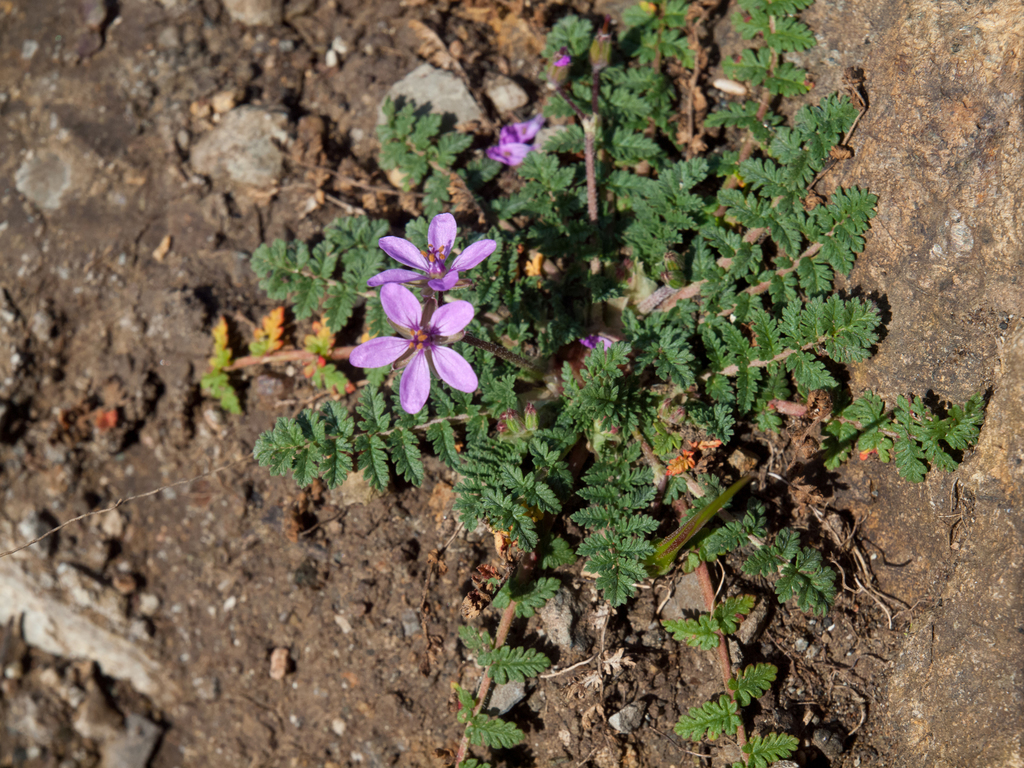
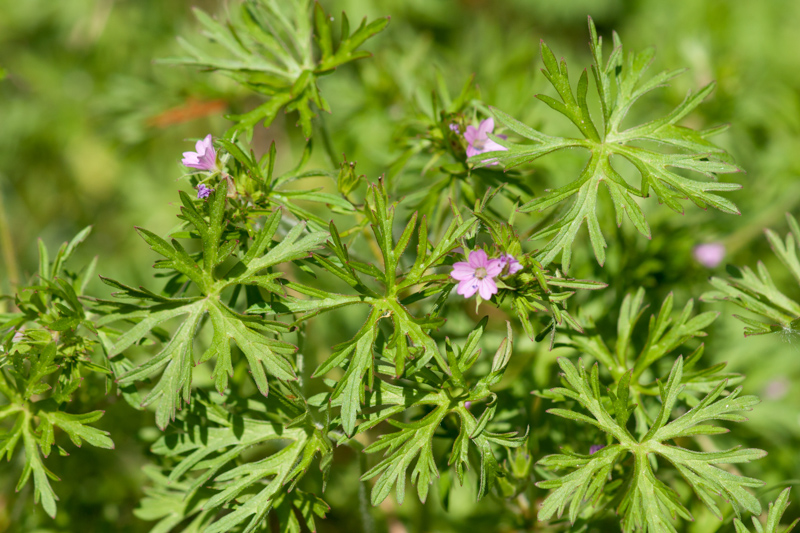
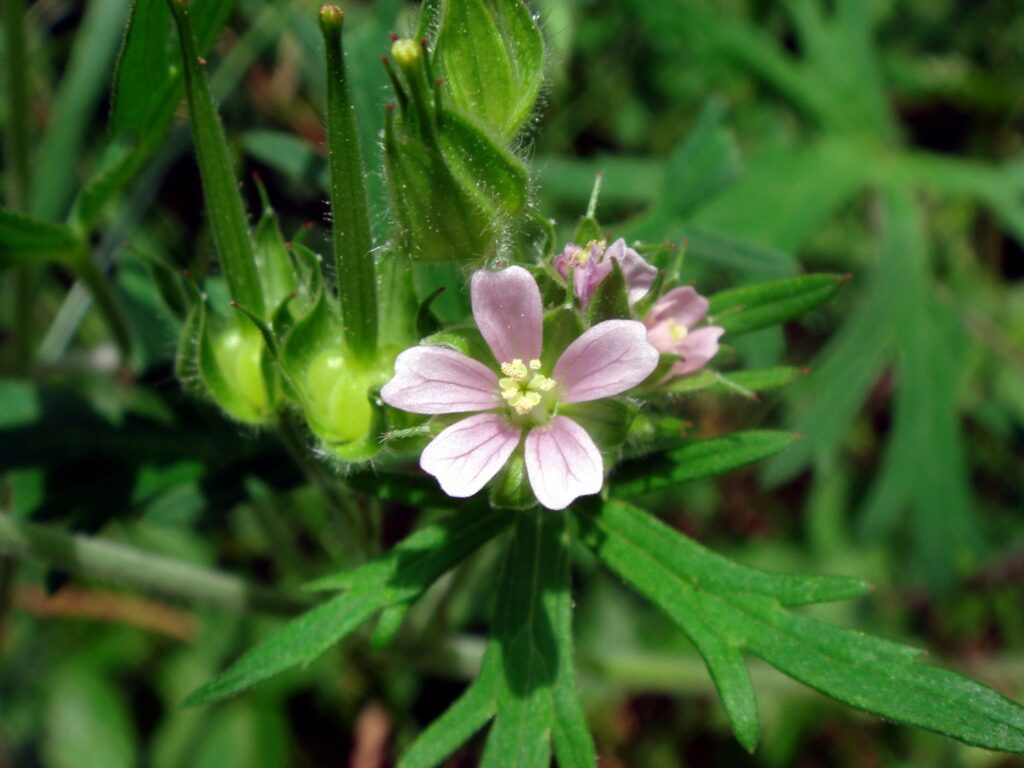
Characteristics:
Native Habitat
There are many species and hybrids of Pelargonium. The majority are found in Southern Africa, some in East Africa, a few in Australia, New Zealand and the Middle East. All are found in locations with low rainfall and low humidity.
Growth Habit
Variable, from 1 ft to 6 ft and bushy, sprawling or upright depending on species/hybrid. Some are succulent. Occasionally thorns may also be found.
Foliage
Highly variable shape and size depending on species/hybrid. Essential oils of the scented pelargoniums are usually found in glandular hairs on both leaf surfaces.
Blooms
All species and many hybrids have umbels of five petaled flowers with irregular arrangement of two upper petals and 3 lower petals. Some hybrids have been bred to have a more regular arrangement of the petals as is commonly seen in the ornamental and misnamed bedding “geraniums”. Flower color ranges from white to cream, pale pink, lavender, bright pink, orange, reddish orange, red, brownish red or even dark purple. The flower structure includes 10 stamens of which only 5-7 are fertile (pollen producing). Most are spring blooming but hybrids have been developed to bloom all summer. There are also a few winter blooming species. Refer to the history section for more information about the differences between Pelargoniums and true Geraniums.
Seeds
The mature seed pods are elongated and thought to resemble a stork’s bill. Each pod contains 1 plumed seed which is ejected at maturity to be spread on the wind.
Roots
Fibrous, a few species form tubers.
Cultivation:
Tender Perennial, most require a frost-free area but a few may be hardy in zone 9 and during mild winters in Central and South Texas. All should be planted in well-draining soil and never be allowed to sit in saucers of water. Frequent pruning will help reduce legginess. Light requirements may be generalized by physical appearance. Large leaf rose scented are the easiest to grow and can take full sun but will also tolerate afternoon shade. Those with soft grey leaves will benefit from afternoon shade to prevent leaf burning but can survive in full sun. Pelargoniums with oak leaf shapes also are at their best with afternoon shade. The small leaf cultivars most commonly represented by ‘Lemon Crispum’ types are the most frustrating to grow as they are easy to overwater, they look best with afternoon shade. Pelargoniums should be fertilized monthly with a basic garden fertilizer plus extra magnesium (dissolve 1 teaspoon Epsom salts in a gallon of water) during active growth. Texas summer heat may slow growth and watering should only be done when soil feels dry to the touch.
Propagation
Seeds or cuttings taken in late fall or early spring. Cuttings may be placed in ordinary potting soil and should NOT be placed in mist beds or covered with plastic bags as is commonly done with many other types of cuttings. The excess humidity can cause the cuttings to rot before they are able to root.
Folklore & Traditional Uses:
Pelargoniums have a fascinating and sometimes confusing history. After a route around the southern tip of Africa was discovered in response to European desire for spices, ships began traveling the route. These ships carried surgeons who were often naturalists collecting plants and seeds as the ships would stop to replenish water and food. It is not known exactly when the first Pelargoniums were brought to Europe but John Tradescant noted that he received Pelargonium triste in 1631, although because it arrived on a ship returning from India it was not recognized as of African origin. Further explorations of the African continent yielded more Pelargonium species. They were originally considered members of the genus Geranium. However, as botanists examined more of the plants they came to the conclusion that there were significant differences and a new genus within the Family Geraniaceae was created. The first publication differentiating Pelargonium, Erodium, and Geranium as separate species was in 1789 in Aiton’s Hortus Kewensis. Diana Miller has a detailed description of the “journey” of Pelargoniums in her book Pelargoniums.
Modern & Medicinal Uses:
Varies by species/hybrids and the chemicals they contain. Historically they have been used to treat diarrhea, respiratory disorders such as coughs and bronchitis, tonsillitis, hepatic disorders, kidney and bladder disorders, and as a wound treatment. Current uses are for respiratory disorders and use of the essential oil from rose scented Pelargonium as a relaxant. There have been investigations for anti-inflammatory, anti-microbial, and anti-fungal uses.
Toxicity Concerns
Pelargonium grossularioides should not be used in pregnancy due to its spasmogenic action on uterine tissue.
Chemical Components
Major Chemical components researched for Medicinal Use are: Citronellol, Geraniol, Linalool, Nerol, Citronellyl Formate, Methyleugenol, Umckalin.
Our Scented Geraniums in the Africa Bed:
Rose Scented Geranium
Pelargonium ‘Rosé’ (Old Fashioned Rose Scented, Bourbon Geranium)
Growth Habit : Erect, Branching plant to 3ft
Foliage : Large, 2-3 inches, green, lobed, shallowly toothed, soft hairs on both surfaces, highly rose scented
Roots : Fibrous
Blooms : spring blooming, small, pale pink with darker veins on upper petals
Important Chemistry : Citronellol, Citronellyl Formate, Geraniol, Linalool, Geranyl Butyrate, Beta-Carophyllene
Medicinal Use : The essential oil is used in aromatherapy to reduce anxiety and under investigation as anti-inflammatory

This is a hybrid often misidentified as the true species Pelargonium graveolens. P. ‘Rosé’ is the plant that is the source for rose geranium oil (Bourbon Geranium when raised commercially on the Island of Reunion) that is used in perfumery, aroma therapy and even some food products.
Apple Scented Geranium
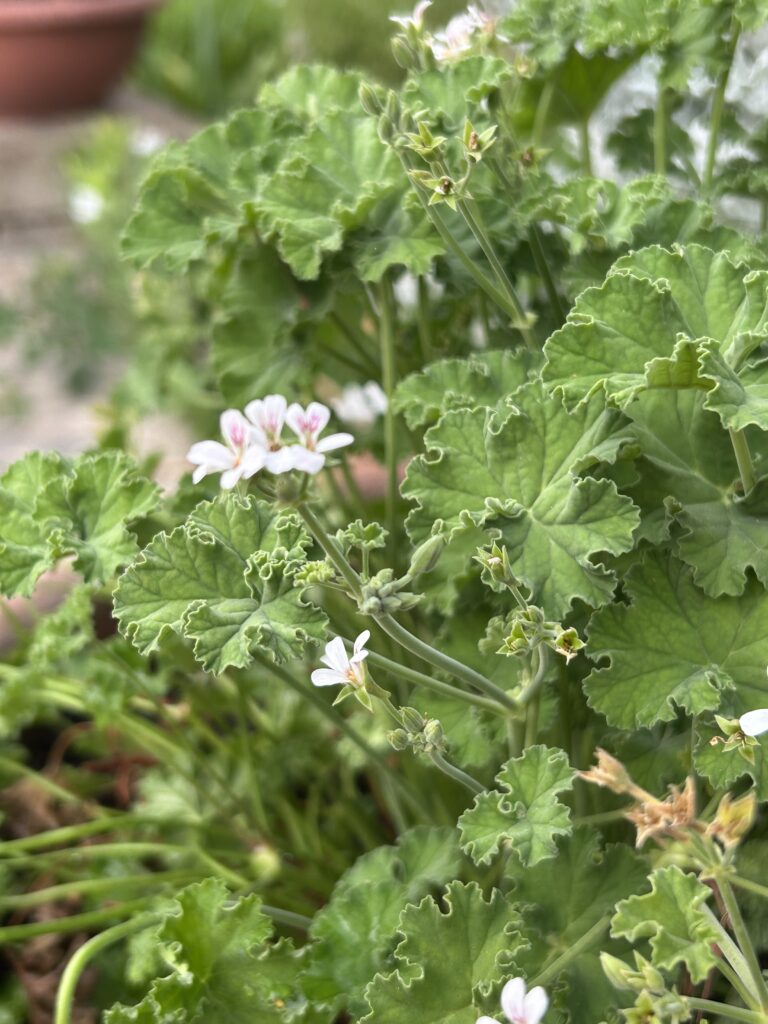
Pelargonium odoratissimum (Apple scented)
Growth Habit : Small, prostrate shrub growing to 12 inches with short, main stem and sprawling branches.
Foliage : One inch round leaves with apple green coloring and short, soft hairs.
Roots : Slightly tuberous.
Blooms : Umbels of 3-10 small white flowers with deep pink markings on the upper two petals
Important Chemistry : Citronellol, Nerol, Citronellyl Formate, Methyleugenol (note that these vary between studies)
Medicinal Use : Under investigation as food preservative
Other Pelargoniums that may be of interest but are not currently in The Pharmacy Garden:
Rabassam Geranium
Pelargonium sidoides:
This is the Pelargonium with the most recognized and researched medicinal use. It was formerly called Pelargonium sidaefolium. Unfortunately, it is difficult to grow in the heat and humidity of Texas. It is reported that when cut the roots appear bright red, giving the name “Rabassam”. The roots have traditionally been used for diarrhea and for respiratory ailments. There are commercial products labeled as Umcka® or Umckaloabo® that are available for over-the-counter purchase in the United States.
Growth Habit: Low growing rosette. Foliage: Velvety, heart shaped, silvery green leaves to 1 inch. Roots: Fibrous, somewhat thickened. Blooms: small, very dark (almost black) reddish purple flowers.
Important Chemistry : Umckalin, Tannins
Peppermint Scented Geranium
Pelargonium tomentosum:
Grows best in semi-shady locations and tolerates more water than most Pelargoniums. Growth Habit: low growing, large spreading. Foliage: Dark green, soft, hairy leaves to 3 inches. Roots: Fibrous. Blooms: Clusters of small white flowers occurring in spring
Important Chemistry : Isomenthone, Menthone
Coconut Scented Geranium
Pelargonium grossularioides:
This is a short-lived plant that often survives Texas winters. It readily reseeds. Traditional uses included treatment of kidney and bladder disorders, menstrual problems, jaundice, tuberculosis and eczema. It should NOT be used by pregnant women.
Growth Habit : low spreading plant. Leaves: One-inch dark green rounded leaves with reddish leaf stalks. Roots: Fibrous. Flowers: Clusters of tiny, bright pink blossoms almost year-round
Important Chemistry : Geraniol, Isomenthone, Citronellol, Methyl Eugenol
Citronella Geranium
Pelargonium citronellum (the true species) aka: the Mosquito Plant
Very similar to the plant marketed as P. ‘Mabel Grey’. Growth Habit: Large, upright, many branched plant growing to 3 ft tall. Foliage: Highly lemon scented, rough textured, deeply indented, pointed, 3 inch, bright green leaves. Roots: Fibrous. Blooms: The flowers are a showy pink with purple striations.
Important Chemistry : Geranial, Neral
CONTROVERSY: Pelargonium citronellum, Pelargonium x citronella, ‘Pelargonium citrosum’ Studies do not show that any of these plants repel mosquitoes. The plant marketed as “The mosquito plant” or ‘Pelargonium citrosum’ (not a valid species name) claims to repel those pesky insects if planted in the yard. While it is a nice and easy to grow plant that physically resembles Pelargonium Rosé with a somewhat lemony scent, studies show that it is not effective for mosquito control.
Recipes:
Pineapple Rose Freeze
4 Cups Pineapple Juice
10 Rose Scented Pelargonium Leaves
2 Cups Sugar
1/2 Cup Lime Juice
Heat pineapple juice slightly. Add rose scented pelargonium leaves
and use a spoon to gently bruise them against the sides of the
container. Cover and let steep 30 minutes. Remove leaves.
Add sugar and lime juice and stir until dissolved. (Heat slightly to speed
dissolution) Cool the mixture and freeze using an ice cream freezer
or the shallow pan in the freezer technique*.
Garnish with pineapple sage or scented pelargonium leaves and flowers when serving.
*Pour liquid into a shallow baking pan. Place in the freezer. Stir
with a fork every 30-45 minutes until frozen.
More Culinary Uses
Pelargoniums may be added to tea, for example, a ginger scented leaf will put zing in lemon balm tea.
Pound cake made with rose scented pelargonium leaves is a classic. To do this, the “classic” way is to
place leaves in the bottom of your prepared cake pan and pour the batter over the leaves, then bake as usual. For a more earthy appearance and stronger flavor, grind 6 leaves with each cup of sugar in your pound cake recipe and then prepare as usual, without placing leaves in the bottom of the pan.
Some herbal cooks keep a canister of rose pelargonium scented sugar on the counter to use in cookies and other desserts. Simply layer fresh leaves with your sugar, remove the leaves after two weeks and enjoy. One can even whirl a fresh leaf with sugar in a blender to get instant flavor.
Scented pelargonium jelly makes a special gift. Make an apple jelly by infusing warm apple juice with rose scented pelargonium leaves for 1 hour, strain and then use in your favorite recipe. (I use the jelly recipe that comes in the Sure-Jell package).
References:
American Botanical Council Herb Clip. September 3, 1996. Study Shows Citrosa Ineffective as Mosquito Repellent
Andrade, Milene et al. 2011. Antimicrobial activity and chemical composition of essential oil of Pelargonium odoratissimum. Brazilian Journal of Pharmacognosy. 21(1) 47-52. Jan/Feb 2011
Ben Hsouna, Anis et al. 2024. Insight into Pelargonium odoratissimum Essential Oil Preservative Properties Effect on Ground Beef. Foods 2024, 13, 2181. https://doi.org/10.3390 foods13193181. Accessed 2/21/2025.
Boukhatem, Mohamed Nadjib et al. 2013. Rose geranium essential oil as a source of new and safe anti-inflammatory drugs. Libyan Journal of Medicine 2013, 8:22520 http://dx.doi.org/10.3402/ljm.v8i0.22520. Accessed 2/21/2025
Brawner, Faye. 2008 P. citronellum Geraniums Around the World. Volume 56:2 p.12. Summer 2008.
Brendler T, Stander MA and van Wyk B E. 2024. Stevens’ Cure (Umckaloabo) – the vindication of a patent medicine. Frontiers in Pharmacology. 14:1294997
https://www.frontiersin.org/journals/pharmacology/articles/10.3389/fphar.2023.1294997/full Accessed 2/10/2025.
Lis-Balchin, Maria. Geranium and Pelargonium – The genera Geranium and Pelargonium. 2002. Taylor & Francis. London.
Maia, Marta Ferreira and Sarah J Moore. 2011. Plant-based Insect Repellents: A Review of their efficacy, development and testing. Malaria Journal
https://pmc.ncbi.nlm.nih.gov/articles/PMC3059459/ accessed 2/10/2025
Miller, Diana. Pelargoniums. 1996. Timber Press. Portland, Oregan.
PlanZAfrica, website: https://pza.sanbi.org, Accessed 2/19/2025.
Saraswathi, J et al. 2011 Phytopharmacological importance of Pelargonium species. Journal of Medicinal Plants Research Vol 5(13) pp. 2587-2598. July 4 2011. http://www.academicjournals.org/JMPR Accessed 2/1/2025.
Tucker, Arthur O. & Thomas Debaggio. The Big Book of Herbs. 2000. Interweave Press. Loveland, Colorado.
Van der Walt, J.J.A Pelargoniums of Southern Africa Vol 1. 2nd Ed. 1979. Fischer GmbH & Co. Hillscheid, Germany.
Van der Walt, J.J.A. Pelargoniums of Southern Africa Vol 3. 1988. National Botanic Gardens Kirstenbosch, South Africa.
Yard and Garden, and Iowa State University Extension and Outreach. 2016
https://yardandgarden.extension.iastate.edu/encyclopedia/mosquito-control, Accessed 2/10/2025.
Return to Africa Region
Return to Pharmacy Garden









